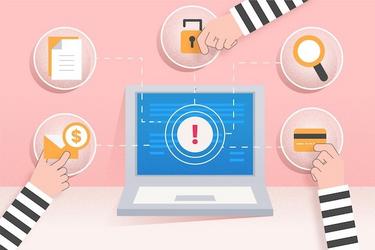High risks of fraud
The crypto industry, while offering numerous opportunities for innovation and investment, is also susceptible to high risks of fraud. The combination of technological complexity, regulatory uncertainty[1], and the anonymity[2] of transactions can create an environment conducive to fraudulent activities. Recognizing and mitigating these risks is crucial for participants in the crypto space.
- Common Types of Fraud
- Factors Contributing to Fraud Risk
- Mitigating Fraud Risks
- The Role of Technology in Combating Fraud
- High risks of fraud
- Evolving Nature of Fraudulent Schemes
- Technology-Driven Fraud
- Globalization and Cross-Border Fraud
- Financial Sector Vulnerabilities
- Impact of Social Engineering
- Regulatory and Compliance Challenges
- Mitigation Strategies and Solutions
Common Types of Fraud
Fraud within the crypto industry can take many forms, including Ponzi schemes, phishing[3] attacks, fake ICOs (Initial Coin Offerings), and scam wallets. These fraudulent activities exploit the trust and lack of knowledge of unsuspecting investors and users.
Factors Contributing to Fraud Risk
Several factors contribute to the high risk of fraud in cryptocurrencies[4]:
- Anonymity: While providing privacy, the anonymous nature of transactions can make it difficult to trace and recover stolen funds.
- Lack of Regulation: The evolving regulatory landscape[5] can create loopholes that fraudsters exploit.
- Market Volatility[6]: The rapid price fluctuations of cryptocurrencies can be used to manipulate market sentiment[7].
Mitigating Fraud Risks
Efforts to mitigate fraud in the crypto industry include enhancing user education, implementing stricter security measures by exchanges and wallet[8] providers, and developing regulatory frameworks aimed at protecting investors.
The Role of Technology in Combating Fraud
Blockchain[9] analytics and monitoring tools are increasingly being used to detect suspicious activities and prevent fraud. These technologies, along with community vigilance and regulatory efforts, play a crucial role in making the crypto ecosystem safer.
High risks of fraud
In the complex landscape of modern finance, technology, and commerce, the risks of fraud have escalated, presenting diverse challenges to individuals, businesses, and governments worldwide. Fraudulent activities have become more sophisticated, leveraging the advancements in technology to exploit vulnerabilities in systems and human psychology. Understanding the high risks of fraud is essential for developing effective strategies to prevent, detect, and mitigate these threats.
Evolving Nature of Fraudulent Schemes
The tactics and schemes used by fraudsters are constantly evolving, making it challenging for regulatory bodies and organizations to keep pace. As technology advances, so do the methods of fraud, ranging from classic schemes like identity theft and phishing to more complex frauds involving artificial intelligence and machine learning. This continuous evolution requires a proactive and adaptive approach to fraud prevention and detection.
Technology-Driven Fraud
The digital age has brought about a surge in technology-driven fraud, exploiting the internet, mobile technology, and the growing digitalization of financial services. Cybercriminals use sophisticated techniques such as malware, ransomware, and social engineering to carry out attacks on individuals, corporations, and even governments. The widespread use of digital platforms for financial transactions has expanded the attack surface, increasing the risk of online fraud.
Globalization and Cross-Border Fraud
Globalization has facilitated the expansion of business and commerce across borders, but it has also opened new avenues for cross-border fraud. Fraudsters exploit differences in regulatory frameworks and enforcement across countries to orchestrate complex schemes that are difficult to trace and prosecute. The international nature of these frauds complicates the efforts to combat them, requiring cooperation and coordination among nations.
Financial Sector Vulnerabilities
The financial sector, being the backbone of economic activity[10], is particularly vulnerable to fraud. From banking fraud, credit card fraud, to securities and investment fraud, the financial industry faces a wide array of threats. The high stakes involved in financial transactions make it a lucrative target for fraudsters, necessitating robust security measures and vigilance.
Impact of Social Engineering
Social engineering plays a significant role in many fraudulent activities, exploiting human psychology rather than technological weaknesses. Fraudsters use deception, manipulation, and influence to trick individuals into divulging confidential information or performing actions that compromise security. The sophistication of these tactics makes it imperative for individuals and organizations to foster awareness and educate themselves on how to recognize and resist such attacks.
Regulatory and Compliance Challenges
The regulatory landscape surrounding fraud prevention and detection is both complex and dynamic. Organizations must navigate a maze of laws and regulations designed to combat fraud, which can vary significantly from one jurisdiction to another. Compliance with these regulations is crucial but can also be resource-intensive, diverting attention from core business activities.
Mitigation Strategies and Solutions
Addressing the high risks of fraud requires a multifaceted approach, combining technology, regulation, education, and collaboration. Implementing advanced security technologies, fostering international cooperation, enhancing regulatory frameworks, and raising public awareness are all critical components of an effective strategy against fraud. Additionally, the adoption of emerging technologies like blockchain and AI in fraud prevention efforts offers new avenues for securing transactions and identifying fraudulent activities.
In conclusion, the high risks of fraud in today’s interconnected world demand vigilance, innovation, and cooperation. By understanding the complexities of modern fraudulent schemes and adopting comprehensive strategies to combat them, societies can protect themselves against the significant financial, social, and psychological impacts of fraud.
- Regulatory Uncertainty — The lack of clear regulatory guidelines and frameworks governing the use and trading of virtual assets.
- Anonymity — The ability to maintain privacy over transaction and identity details within cryptocurrency transactions.
- Phishing — A cybercrime in which a target or targets are contacted by email, telephone or text message by someone posing as a legitimate institution to lure individuals into providing sensitive data.
- Cryptocurrencies — Digital or virtual currencies that use cryptography for security and operate on a decentralized system, unlike traditional currencies.
- Regulatory Landscape — The set of laws, guidelines, and policies that govern the use of virtual assets across different regions.
- Market Volatility — The rate at which the price of a cryptocurrency increases or decreases for a given set of returns.
- Market Sentiment — The overall attitude of investors towards a particular market or asset, influencing its price movements.
- Wallet — A digital tool that allows users to store and manage their cryptocurrency addresses.
- Blockchain — A decentralized digital ledger recording cryptocurrency transactions across multiple computers.
- Economic activity — Any action that involves the production, distribution, and consumption of goods and services.
- Compliance — The act of adhering to legal standards and regulations established by governmental bodies and regulatory agencies, particularly in the context of financial operations and transactions involving cryptocurrencies.
- Chainalysis. 'The 2020 State of Crypto Crime', 2020.
- Federal Trade Commission. 'Consumer Protection in the Crypto Economy', 2021.


